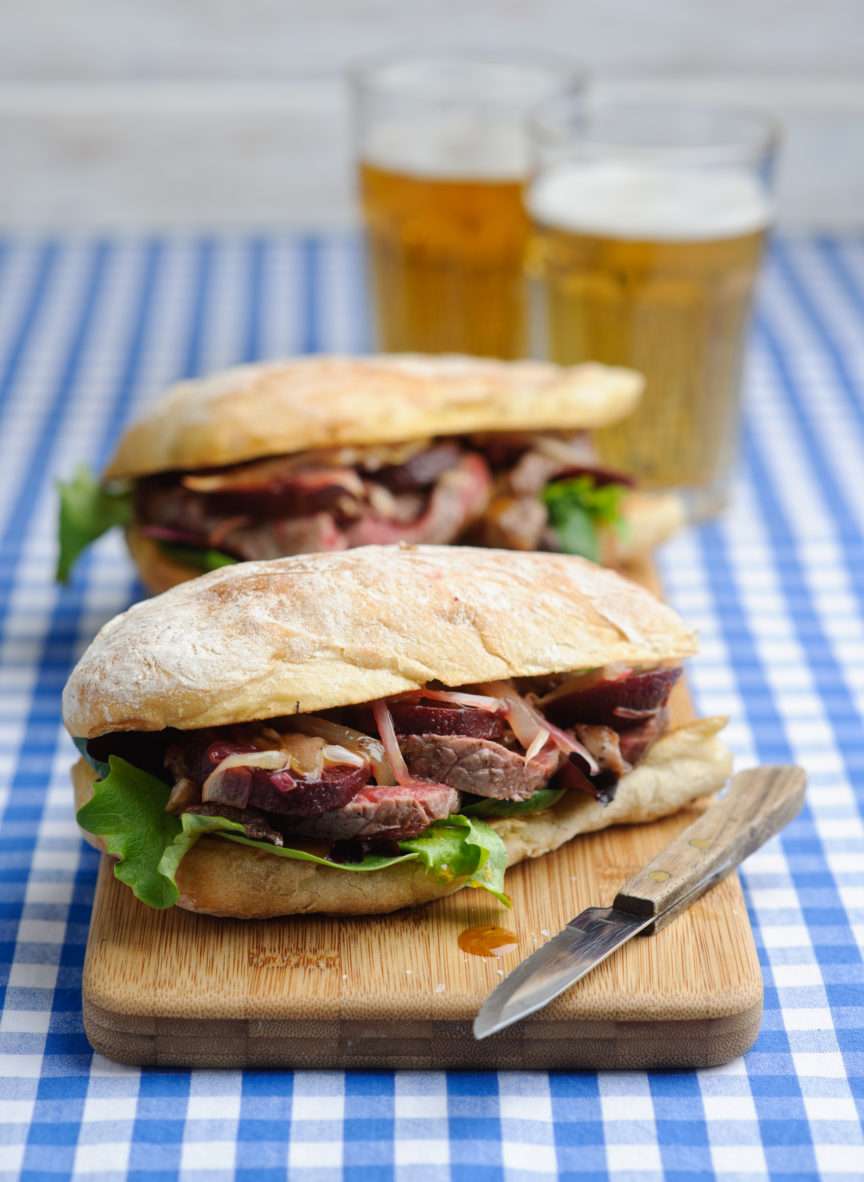The British Sandwich Association (yes, there is one) has launched a campaign to encourage people across the UK to ‘Love Lunch’ after its research showed that almost 60% of adults admit to eating lunch at their desk at least once a week and well over a quarter to taking less than the legal 20 minute break.
The results of the survey also showed that people in the South West and Wales currently take the shortest average lunch break and those in Scotland and Northern Ireland the longest. With only a third of us managing to find somewhere nice to sit and relax and enjoy our lunch and over 20% admitting to often skipping lunch it would appear that the UK is lagging well behind the rest of Europe when it comes to lunch breaks.
BSA Director Jim Winship explains: “While UK employment legislation means employees are entitled to a minimum of a 20 minute break if they are working for six hours or more it would seem that people are simply not making the most of the time. We want to remind people about the benefits of taking time away from their place of work, grabbing a nutritious lunch and, weather willing, enjoying some fresh air.”
Time worth taking
And there is plenty of evidence to support the benefits of taking a proper break for lunch with some reports even suggesting that the time you spend away from the office is more than compensated for by an increase in productivity in the afternoon. Eating any type of meal at lunchtime can help keep the metabolism active but some foods clearly pack more of a nutritional punch than others, with experts recommending a combination of complex carbohydrates and lean proteins to help provide a long-lasting energy source and stable blood sugars.
What’s more, the Weight Control Information Network claims that people who regularly skip meals tend to weigh more than those that eat regularly.
The UK’s top 10 favourite sandwiches (2012)
Chicken is still the most popular filling in commercially made sandwiches accounting for around 30% of sandwich sales –– using the equivalent amount of chicken in weight to more than 175 fully loaded Jumbo Jets. That said, other fillings such as cheese, bacon and ham are slowly catching up in the popularity stakes.
- Chicken Salad
- Prawn Mayonnaise
- Egg+Cress
- Bacon+Lettuce+Tomato
- Mixed Selection
- Chicken+Bacon
- Cheese+Onion
- Tuna+Sweetcorn
- Ploughman’s
- Chicken+Sweetcorn
Sandwiches and labelling
BSA Director Jim Winship comments, “The British Sandwich Association has always encouraged clear labelling on sandwiches so that consumers can make a reasoned choice. There are mixed views about traffic light labelling. The EC, for example, prefers GDA information to be given rather than traffic lights as these can be misleading.
“In the case of packaged sandwiches, all major retailers provide information either on the front or back of the pack and most provide much more than they are required to as they see it as part of their responsibility to consumers to work with Government to encourage healthier diets.
“In the case of food-service outlets like Greggs and Pret a Manger, where sandwiches are made on-site by hand, it is not always possible to provide nutritional information on the pack as there can be variations in size from one sandwich to the next. This can affect nutrition levels and, therefore, makes it difficult to precisely label each product. Indeed, if they were to do so these outlets could be accused of misleading consumers if there were variations between sandwiches. However, most retailers who are unable to provide the guidance information on label – and there is no legal requirement for food-service outlets to label – do voluntarily provide guidance on websites or at point-of-sale.”
A little bit of history
Founded in 1990, the British Sandwich Association is the collective voice of the British sandwich industry representing a vast membership of organisations involved in the making, distributing or retailing of sandwiches. The sandwich industry is doing its bit to help people make the most of their lunch break; consumers buying sandwiches in busy City locations queue for less than 2 minutes. British consumers manage to munch their way through over 3.2 billion ready-made sandwiches each year and spend over £6.5 billion buying sandwiches from retail/catering outlets each year.
The first ‘packaged’ sandwich is believed to have been launched by Marks & Spencer in 1985 thanks to the creation of an ‘easy seal’ pack by Hans Blokmann, the then technical director of packaging supplier Danisco Otto Nielsen.
The first actual sandwich – in name at least – was created by the 4th Earl of Sandwich in 1762 when he called for some ‘cuts of beef ‘ to be placed between toasted slices of bread so that he could continue gambling while he ate. At least it was the first toasted sandwich! It is believed that sandwich making dates from well before this time but was largely a food eaten by peasants. The Earl’s request elevated the humble sandwich from the fields to the tables of the aristocracy.
- Try this Steak Sandwich recipe.

